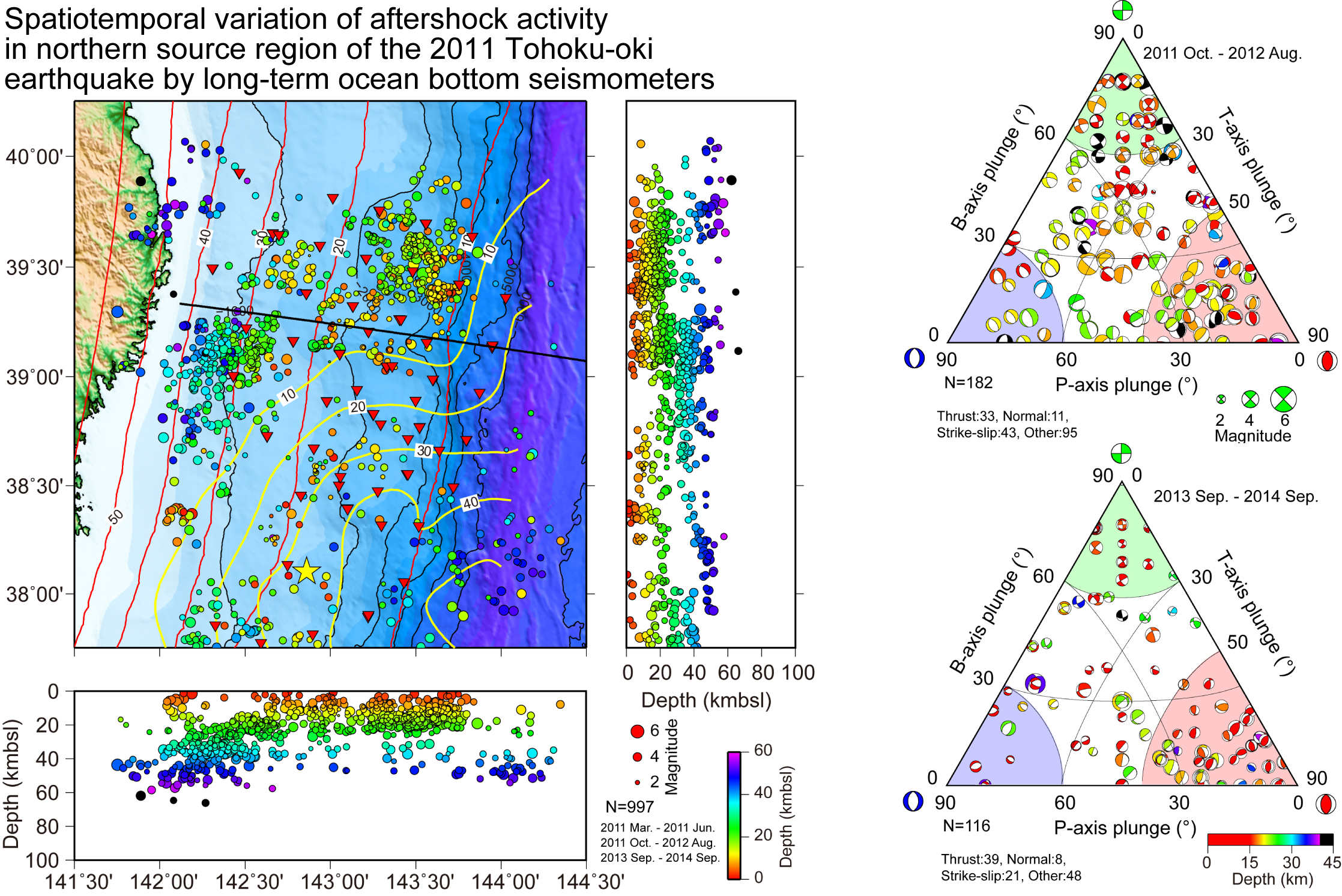Masanao Shinohara 1 , Ryota Hino 2 , Kimihiro Mochizuki 1 , Toshinori Sato 3 , Kazuo Nakahigashi 4 ,Tomoaki Yamada 1 , Yoshio Murai 5 , Hiroshi Yakiwara 6 , Yoshihiro Ito 7 , Ryosuke Azuma 1 and Toshihiko Kanazawa 1,8
1 Earthquake Research Institute, The University of Tokyo, 2 Graduate School of Science, Tohoku University, 3 Graduate School of Science, Chiba University, 4 Department of Marine Resources and Energy, Tokyo University of Marine Science and Technology, 5 Faculty of Science, Hokkaido University, 6 Science and Engineering Area Graduate School of Science and Engineering (Science), Kagoshima University, 7 Disaster Prevention Research Institute, Kyoto University, 8 Association for the Development of Earthquake Prediction
Prog Earth Planet Sci 12, 37 (2025). https://doi.org/10.1186/s40645-025-00713-7
Received: 9 January 2025 Accepted: 1 May 2025, Published online 28 May 2025 as Open Access
A huge plate boundary earthquake eventuated between the Pacific plate and the landward plate in 2011 and was named the 2011 off the Pacific coast of Tohoku earthquake. Following the mainshock, many aftershocks were generated. It is essential to obtain spatiotemporal variation of aftershock activity for understanding of mechanism of the earthquake generation. Because extensive seafloor aftershock observations using many ocean bottom seismometers (OBSs) were performed following the mainshock until September 2011, a precise aftershock distribution just after the mainshock had been revealed. After the urgent OBS aftershock observation, we started seismic monitoring using Long-Term OBSs (LTOBSs) in the source area. Thirty nine LTOBSs were deployed in September 2011 and the observation had been continued for approximately ten months. In September 2013, thirty LTOBSs were deployed in the northern source region, and recovered one year later. From long-term observations, spatiotemporal variation of the aftershock activity in the northern source region of the mainshock was revealed. Because we had carried out a LTOBS observation in the study area before the mainshock, the seismicity before the mainshock and aftershock activities were compared. Source positions of the events were determined by P and S-wave arrival times and focal mechanisms of them were obtained using polarities of vertical components of the first arrivals. Large slip areas have little seismicity during the whole period of the observations. It is deduced from a low seismicity area that the stress in the large slip region had not been recovered three years after the mainshock.
In contrast, a seismic activity become high just after the mainshock comparing the seismicity before the mainshock in the region off Iwate prefecture. Although many earthquakes in the inside of the plates had normal and strike-slip focal mechanisms from 2011 to 2012, some thrust focal mechanism events also occurred. A ratio of earthquakes occurring near the plate boundary with thrust focal mechanism seems to increase in 2013 and 2014 compared to 2011 and 2012. We interpret the increase in thrust-type earthquakes as indicative of stress change starting at the edge of the large slip region of the mainshock.
Information about the hypocenter (origin time and position) and focal solutions determined in this study are available at https://doi.org/10.5281/zenodo.14564691

Left: Comparison between aftershock distribution determined by the OBS observations and slip
distribution of the mainshock (yellow contours). The circles with color indicate hypocenters of
aftershocks. Red contours denote depths of the plate boundary. Right: Triangle diagrams of the
distribution of focal mechanisms. Size of each circle indicates the magnitude of the event and is
color-coded by depth of the event. Focal mechanism solutions in red, green and blue regions
correspond to mechanisms of pure thrust, strike-slip and normal fault type, respectively.

